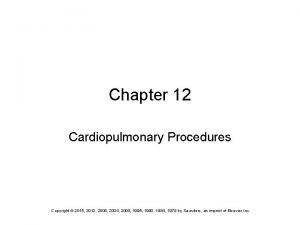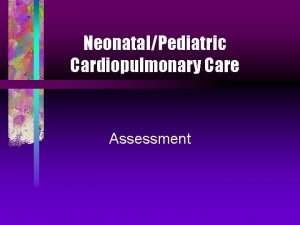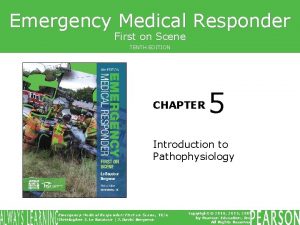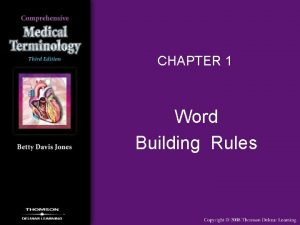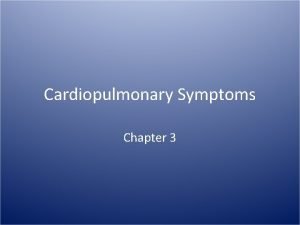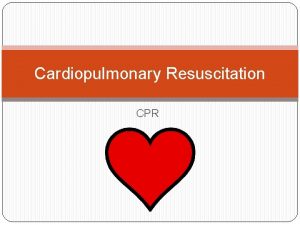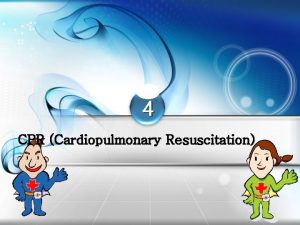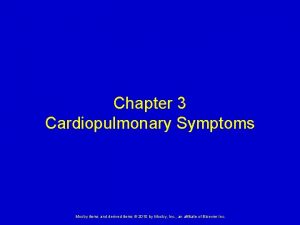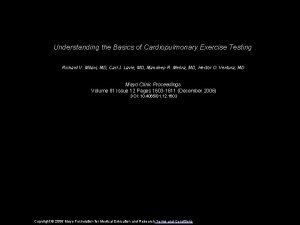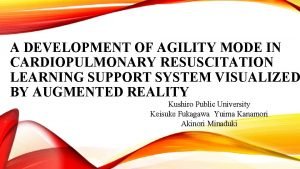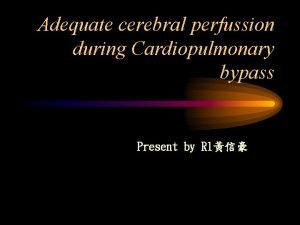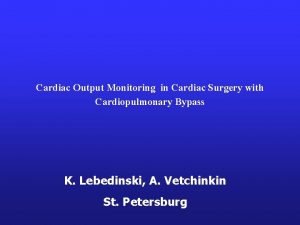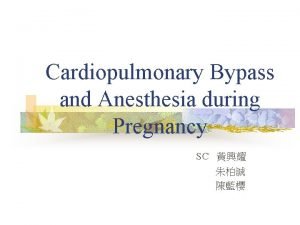CHAPTER 3 Cardiopulmonary Chapter 3 Cardiopulmonary l l















- Slides: 15

CHAPTER 3 Cardiopulmonary

Chapter 3 -Cardiopulmonary l l l Cardiopulmonary resuscitation (CPR) involves the use of artificial ventilation (mouth-to-mouth breathing) and external heart compression (rhythmic pressure on the breastbone). These techniques must be learned through training and supervised practice. Courses are available through the American Heart Association and American Red Cross. Incorrect application of external heart compressions may result in complications such as damage to internal organs, fracture of ribs or sternum, or separation of cartilage from ribs. (correctly performed compressions may cause rib fractures but this is not an indication to stop cardiac arrest, so never practice these skills on another person. When CPR is properly applied, the likelihood of complications is minimal and acceptable in comparison with the alternative death.

Cardio Pulmonary Resuscitation • Should be trained to perform this procedure • If done improperly, could harm victim • Courses available everywhere • New in Late 2006 – 30 Compressions to 2 Breaths – For Everyone! – (Your instructor will provide the current procedures and requirements)

Airway Obstructions open closed Tongue obstructed

Establish unresponsiveness. If no response call 911.

Position victim.

Look, listen and feel for breathing.

If no signs of breathing, provide two rescue breaths.

Check for signs of circulation including carotid pulse, signs of normal breathing, coughing or movement.

If no signs of circulation, find position for compression on the lower portion of the sternum

Place the heel of one hand in the appropriate spot and place your other hand on top. Use the force from the heels of your hands only.

Position yourself directly over the patients sternum and lock your elbows to deliver compressions.

Depress the sternum to move the chest 1 ½ to 2 inches for an adult of average size.

l Each of you will now practice these procedures using an approved mannequin.

1. First Aid ü ü ü l l l Lesson Menu Chapter 1 -Anatomy And Patient Assessment Chapter 2 -Artificial Ventilation Chapter 3 -Cardiopulmonary Resuscitation Chapter 4 -Control Of Bleeding Chapter 5 -Shock Chapter 6 -Wounds And Dressings Chapter 7 -Burns And Scalds Chapter 8 -Musculoskeletal Injuries Chapter 9 -Handling And Transportation
 17:10 providing first aid for specific injuries
17:10 providing first aid for specific injuries Crossword puzzle cardiopulmonary procedures
Crossword puzzle cardiopulmonary procedures Cardiopulmonary
Cardiopulmonary Cardiopulmonary
Cardiopulmonary Megalocardia word breakdown
Megalocardia word breakdown Overview of the major systemic arteries
Overview of the major systemic arteries Summary of the red tent
Summary of the red tent Chapter 8 great gatsby analysis
Chapter 8 great gatsby analysis Chapter 10 chemical reactions
Chapter 10 chemical reactions Chapter 11 assessment chemistry
Chapter 11 assessment chemistry Chapter 9 chemical reactions study guide
Chapter 9 chemical reactions study guide Ratio and proportion for use after section 7-2
Ratio and proportion for use after section 7-2 Chapter 6 career readiness review
Chapter 6 career readiness review Chapter 7 ionic and metallic bonding chapter answer key
Chapter 7 ionic and metallic bonding chapter answer key Chapter 9 surface water chapter assessment answer key
Chapter 9 surface water chapter assessment answer key Chapter 2 representing motion chapter assessment
Chapter 2 representing motion chapter assessment

